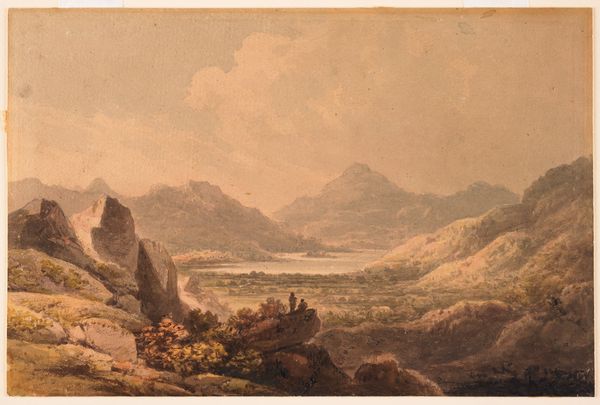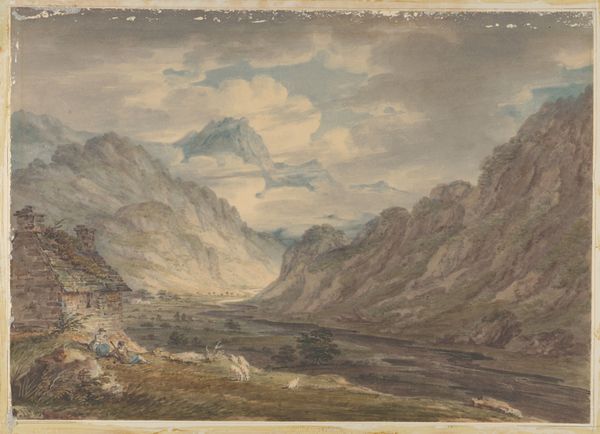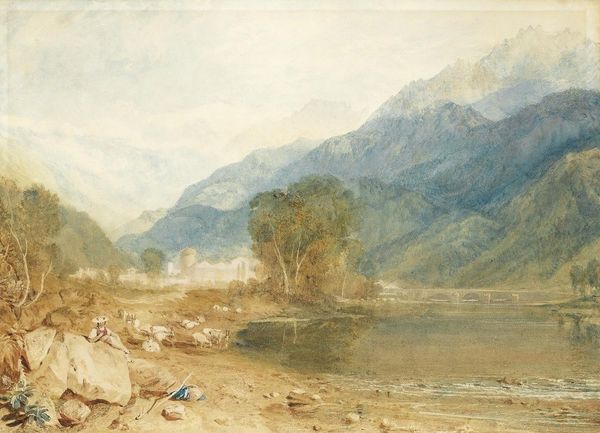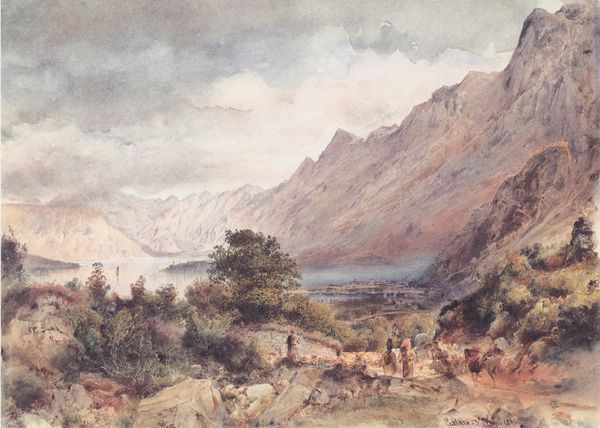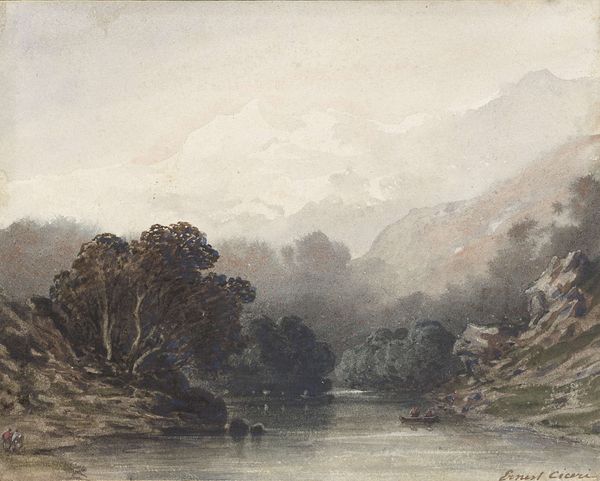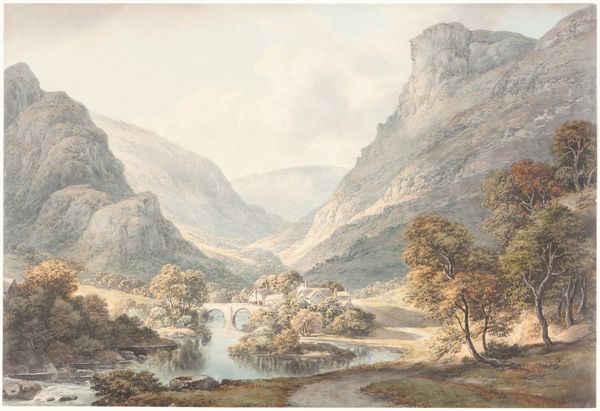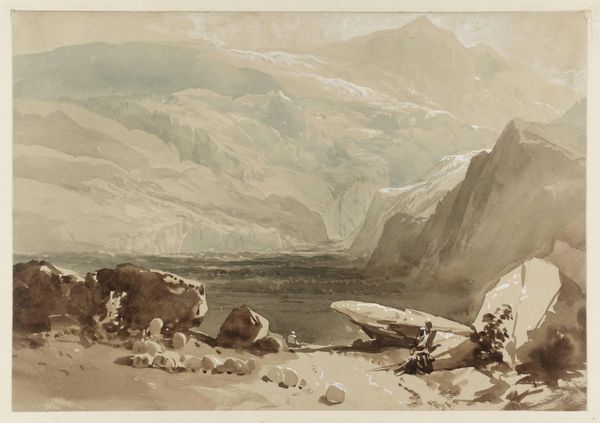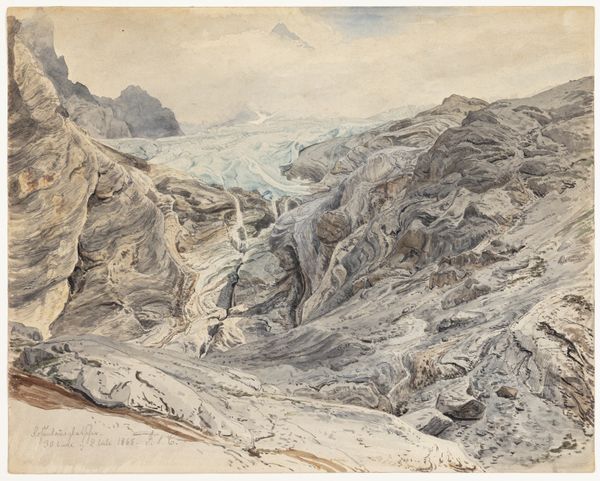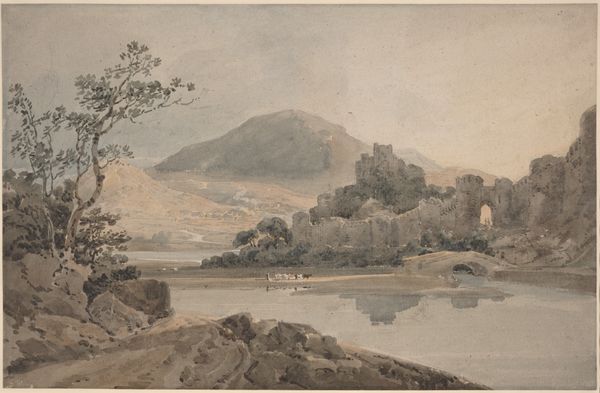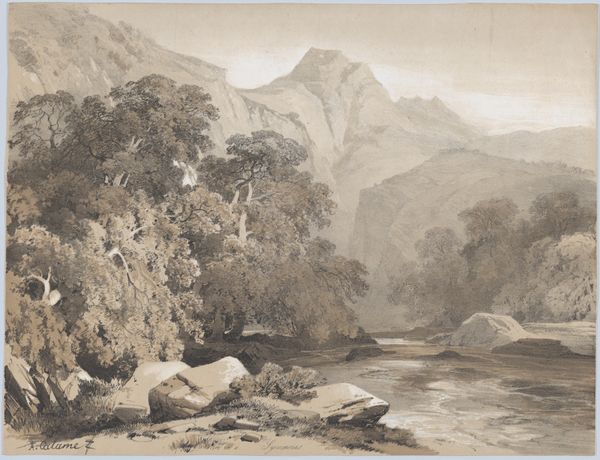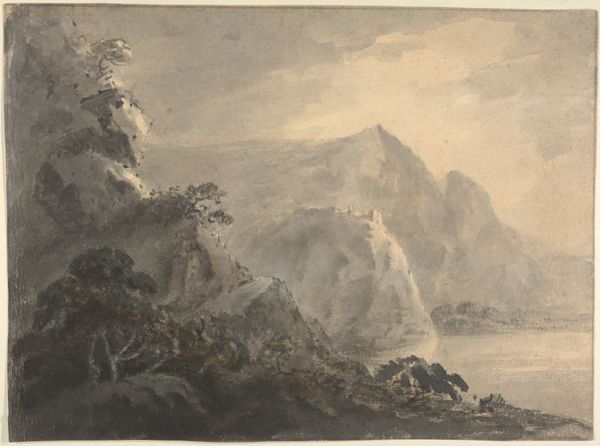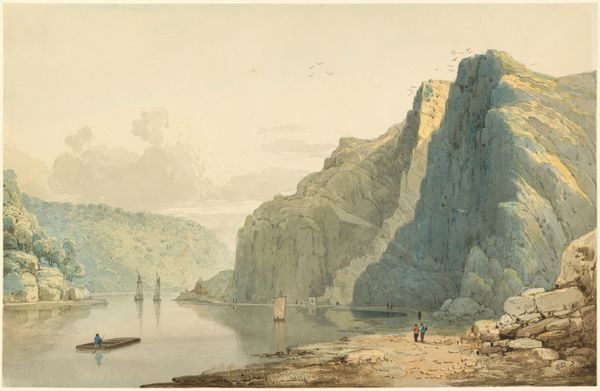
drawing, plein-air, watercolor
#
drawing
#
plein-air
#
landscape
#
oil painting
#
watercolor
#
romanticism
#
watercolor
Dimensions: 20 1/8 x 31 3/8 in. (51.3 x 79.6 cm)
Copyright: Public Domain
Turner painted this view of Borrowdale with watercolor, a medium that allowed him to capture the sublime qualities of the English landscape. Here, the bridge serves not merely as a structural element, but as a potent symbol. From antiquity, bridges have symbolized connection and transition. Consider the Roman pontifex, a term that literally means "bridge-builder," and whose role was to bridge the gap between the human and the divine. This symbolism evolves through time, reflecting our deepest desires for unity. In Turner’s hands, the bridge over Borrowdale’s river reflects a yearning to overcome nature’s divide. It echoes the mythic bridges of Valhalla, linking earthly realms to heavenly ones. The soft hues and atmospheric perspective enhance this sense of longing, drawing us into a landscape fraught with sublimated emotion. Turner uses this symbol to tap into a shared cultural memory, reminding us of our eternal quest to bridge divides, both physical and spiritual.
Comments
minneapolisinstituteofart almost 2 years ago
⋮
Conservation of this watercolor was made possible by a generous contribution from the Blackman-Helseth Foundation. Challenging the academic hierarchies of the time, J.M.W. Turner promoted the watercolor medium as equal in rank to paintings on canvas, just as he sought to elevate the subject of landscape, then seen as inferior to scenes inspired by history or literature. An unrivaled master of watercolor, the artist achieved dazzling painterly and atmospheric effects long thought to be the exclusive domain of oil painting. Here he pulled out all the stops, employing bold brushstrokes, delicate washes, and broad passages of gouache and stopping out varnish—the latter a technique adopted from printmaking in which a fluid is used to mask colors (seen in the rooftops behind the trees at left). In the distant sky, we can see him scraping away pigment with a sharp tool. or his fingernails. Turner visited the valley of Borrowdale in the Lake District, in northwestern England in 1797 and filled two large sketchbooks with pencil drawings and watercolor studies (now Tate Britain). Back in his London studio he consulted these sketches to produce three highly finished watercolors with this composition featuring Longthwaite Bridge and Castle Crag. The smallest, measuring 10 x 15 1/4 inches, was commissioned, according to an inscription on the verso, by "Col. Lane" (sold Sotheby's, London, July 13, 1989, lot 104). Another, measuring 13 5/8 x 21 in. (sold by "Miss Salvin" at Christie's, London, July 8, 1986, lot 150) may have belonged to John Knowles (1810-1880) of Manchester, owner of the Theatre Royal. He was a major collector of watercolors, including at least five by Turner (see Christie's sales 1865, 1877, and 1880). The Minneapolis version, the largest of the three, once belonged to Sir James Joicey of County Durham. We are grateful to James Bennett for sharing his research into the provenance of this watercolor and Turner's different versions of this view.
Join the conversation
Join millions of artists and users on Artera today and experience the ultimate creative platform.

